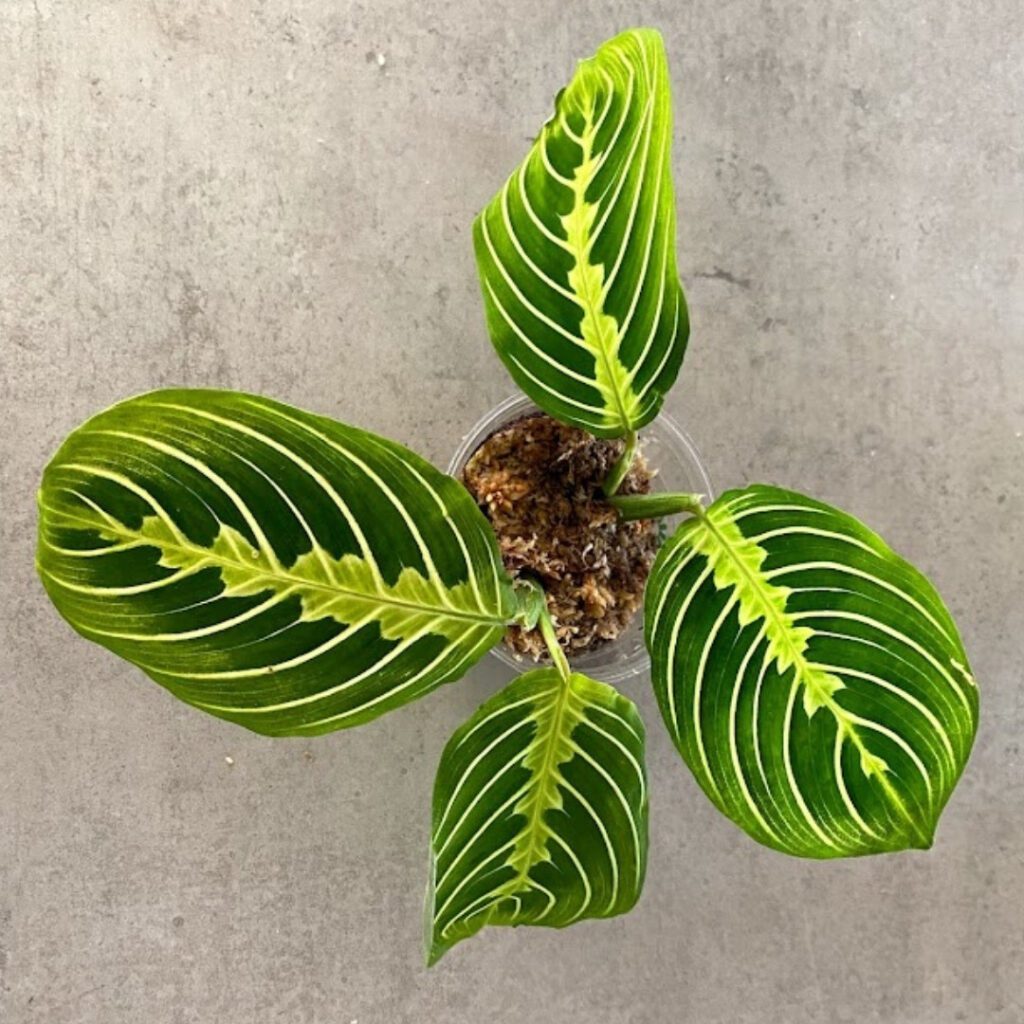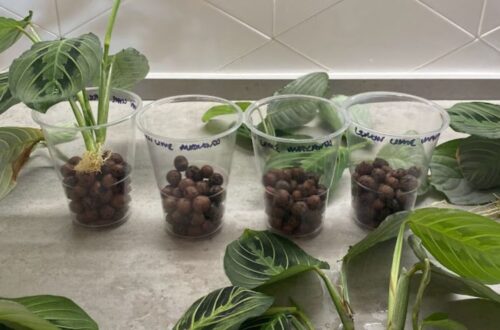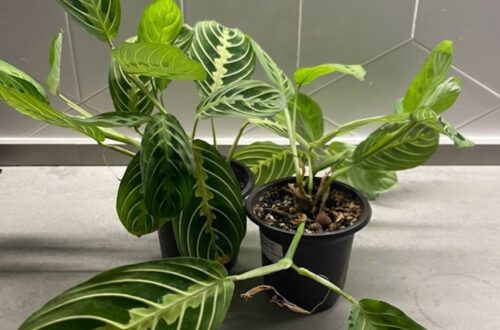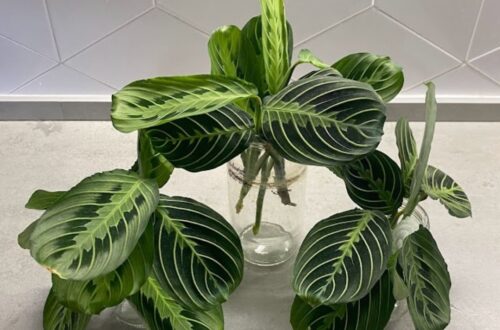
Maranta Lemon Lime
Welcome to our maranta lemon lime (a.k.a. lemon lime prayer plant) care guide, an easy to care for plant as long as you keep it humid and avoid those leaves curling up…
Maranta Lemon Lime Care Summary
| Light needs: | Medium to bright indirect sunlight. |
| Watering needs: | Check weekly, water them when top half of soil is dry. |
| Fertilizer: | A well diluted feed in the summer months every 2 weeks. |
| Soil: | A mix of perlite, orchid bark and normal compost. |
| Humidity: | 60%. |
| Temperature: | 15-25°C (59-77°F). |
| Where to buy: | Try our list of Rare Plant Shops or Etsy. |
| Other names: | Lemon lime prayer plant. |
| Common issues: | Leaf curling when humidity drops. |
Introduction
The maranta lemon lime is one of my favorite houseplants. It is an absolute show stopper with those beautiful striking colors. We run down all you need to know to care for your lemon lime prayer plant, the main thing is to keep it humid or you’ll get the common problem of the leaves curling up.
See also: our other lemon and lime maranta propagation guides: In Water, In Sphagnum Moss, In Leca. And: Prayer Plant Propagation, Prayer Plant Care, Water Propagation..
Tip: we recommend Etsy for buying plants. Look for the best rated seller you can, and try to buy as close to your home as possible so the plant does not travel too far.
A note about affiliate links: when you buy a plant, pots, soil, or other goods through links on this article we sometimes earn a commission. It doesn’t cost you anything, but it really helps us out if you do use them. Thanks a lot! An example of this is if you buy a plant on Etsy using this link. Read our privacy policy for more information. Thanks again.
Maranta Lemon Lime Light Needs
Medium to bright indirect sunlight is ideal. Mine seem to thrive in bright light, they are no shelves next to a south facing window, to the side where they get a lot of bright light but no direct sun. They will be fine in less light, down to medium to be honest. Don’t give them any direct though it, will very likely burn the leaves.
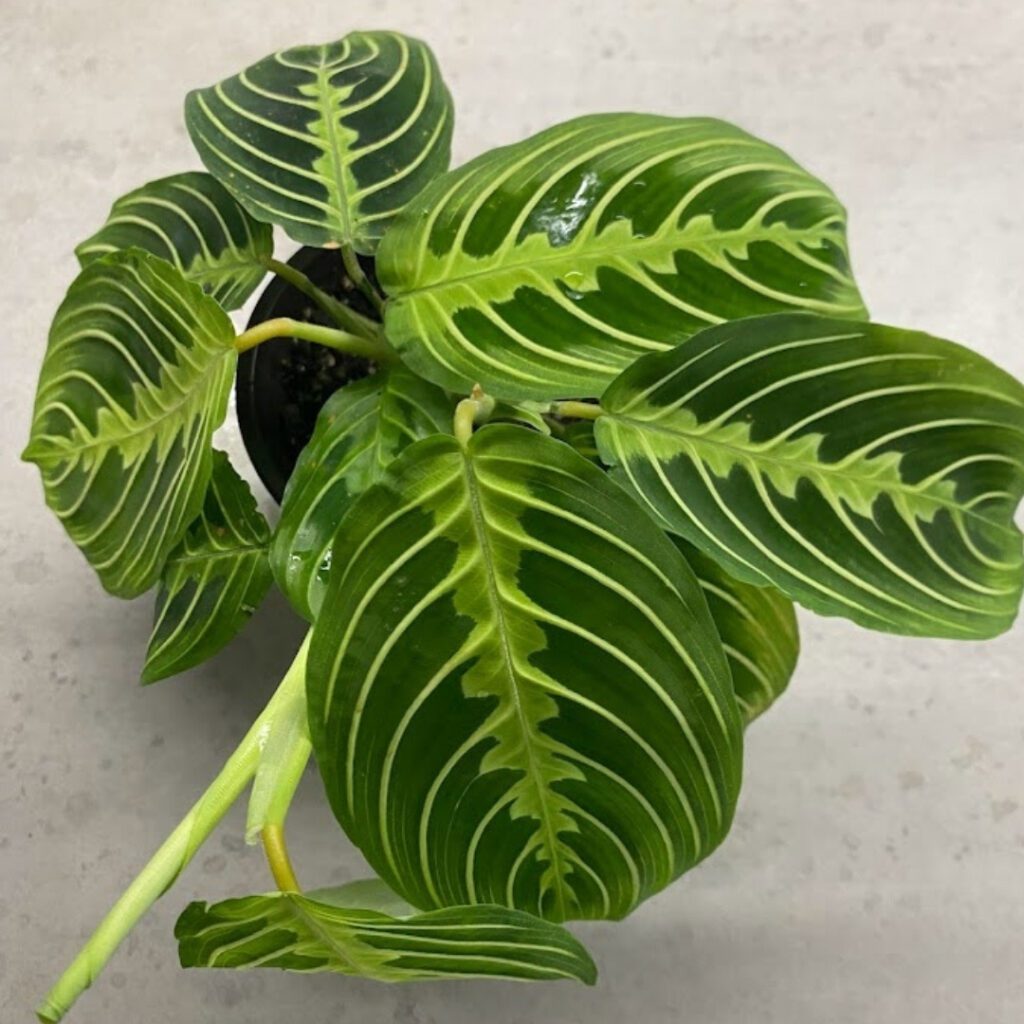
How Often To Water
Check them each week, and water them when the top half of soil is dry. They do not want to sit in heavy wet waterlogged soil, so tip out excess water after watering, but try to keep half the soil moist but not drenched.
Fertilizer
Use a well diluted, balanced feed in the summer months every 2 or 3 weeks to encourage growth. They can get fertilizer burn easily, so be careful, less is more when it comes to feed.
Soil
Give them a well draining compost. I used a mix of perlite, orchid bark and normal compost in equal for mine. You can use a soil that is suitable for other aroids, see your guide here to soil for philodendron.
Tip: if you see flowers, or the flower stalks starting to grow you can cut them off. The flowers are not remarkable and the plant will tend to put it’s energy in to the flowers and not leaf growth, so cutting the flowers back before they get started can help with faster foliage growth.
When To Repot
Check them once a year and repot them if they have out grown their current pot.
Maranta Lemon Lime Humidity
They love humidity and need it to avoid the leaf curling issues they can get, so aim for 60% or more. Keep them with other plants and put a wet pebble tray under them to increase humidity.
Tip: Keep them humid, at least 60% in the day and they’ll be ok with a bit less at night. You can buy a humidity meter (affiliate link) to keep an eye on maximum and minimum levels.
Temperature
15-25°C (59-77°F) is ideal during the day, they do well in most household temperatures as long as you don’t let them get too cold. Try to keep them above 12°C (54°F) as a minimum temperature, they are not great in the cold for too long.
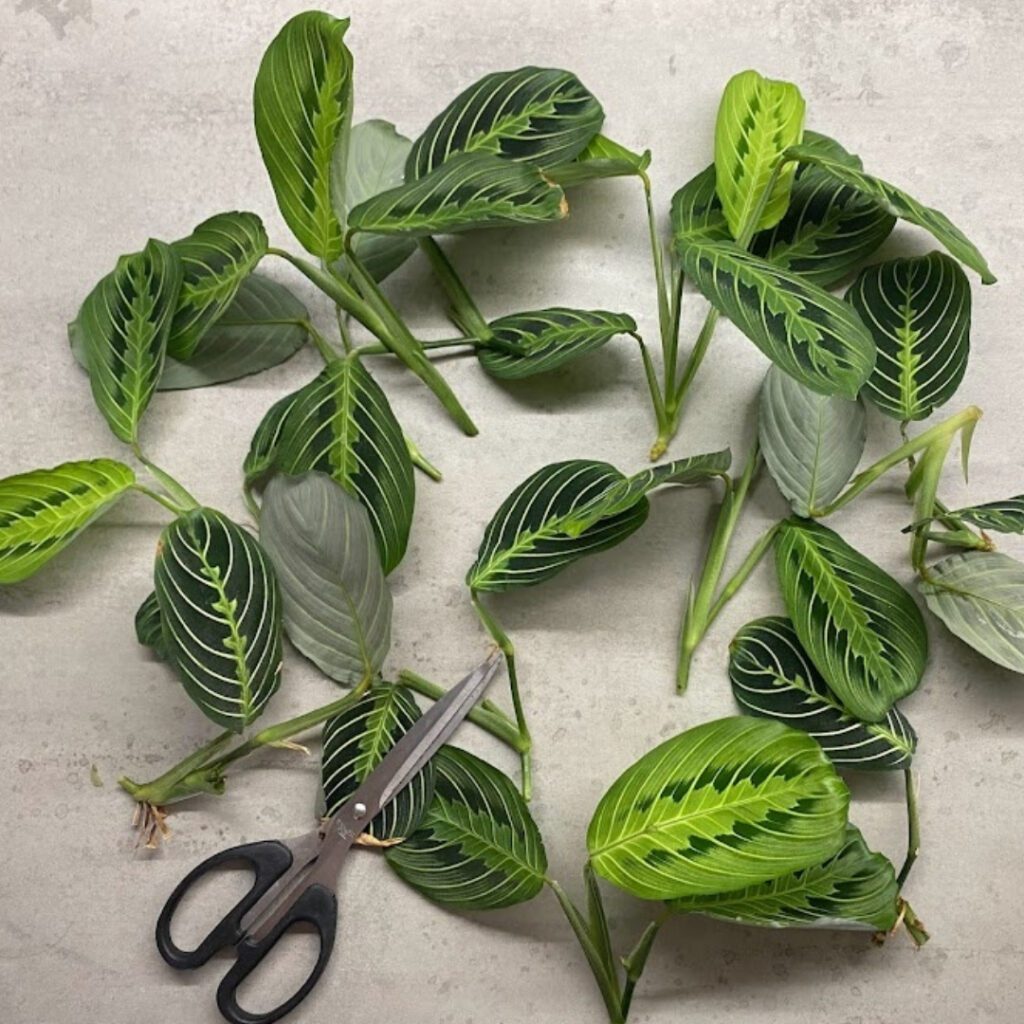
Maranta Lemon Lime Propagation
They are super easy to propagate, especially if you keep them humid. Take a cutting with at least two leaves and a node. The node is the wider join in the stem where stems grow from, you want to cut just below it. Let the cutting dry out for an hour or two so the wound heals. Then you can propagate it in water, sphagnum moss or soil. I water prop mine in a glass jar so I can see root growth, then I pot them up into soil when the roots are established. Make sure you use filtered tap water, as they can be really sensitive to ‘hard’ water. Keep the cuttings in medium indirect sunlight while they root, which can take a month or two, but you should start to see initial growth in a week, certainly within two weeks.
I go into a lot more detail in our other propagation articles, where I propagate my marantas in three different ways, and documented each one with step by step pictures:
- How To Propagate Lemon Lime Maranta In Water
- How To Propagate Lemon Lime Maranta In Leca
- How To Propagate Lemon Lime Maranta In Sphagnum Moss
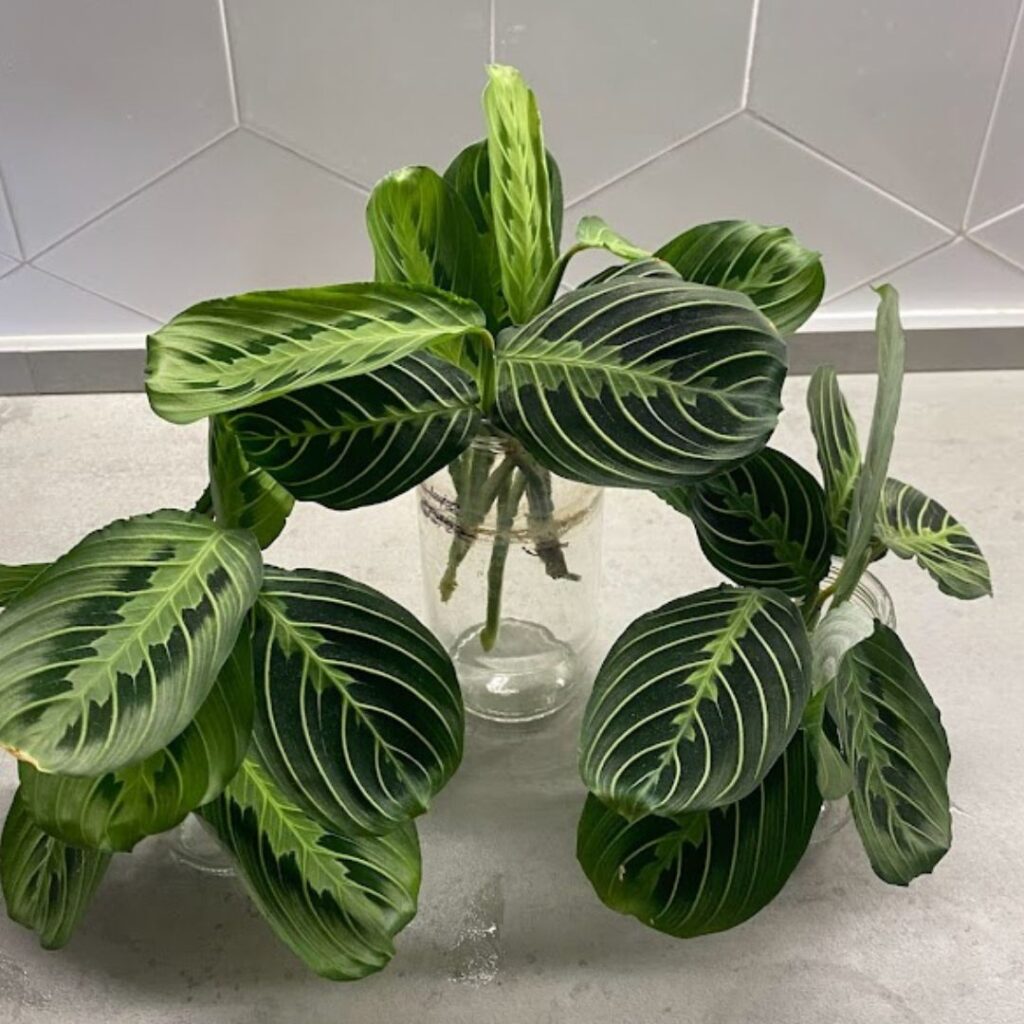
Maranta Lemon Lime USDA Zone
Zone 11, they do not like the cold! They are really best as an indoor plant unless you live in the tropics. If temperatures get down close to freezing your plant will likely get damaged.
Maranta Lemon Lime Scientific Name
Maranta Leuconeura ‘Lemon Lime’.
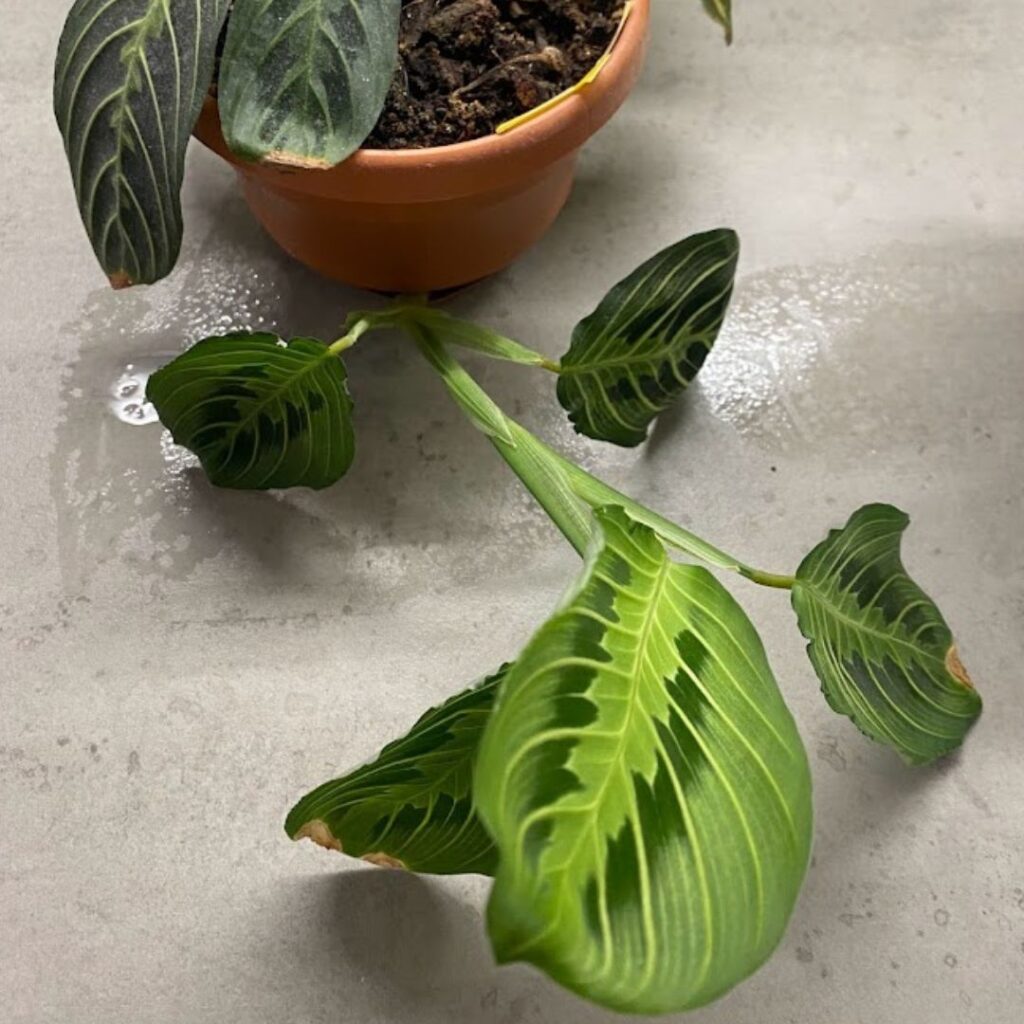
Other Names
Lemon lime prayer plant. Maranta Fascinator Lemon Lime. Maranta Leuconeura ‘lemon Lime’.
Where To Buy
Try our list of Rare Plant Shops. Or Etsy.
FAQs And Common Problems
Underwatering and a lack of humidity are common issues, They get leaf curling when the humidity drops, so mist them if the air gets dry.
The node is the wider join in the stem where stems grow from, you want to cut just below it.
The leaves turn yellow when the plant is over watered, or if it is underwatered. You should be able to tell by considering your watering frequency. Aim to keep the soil slightly moist, but not dry or sodden, and you should be ok.
The good news is they are not toxic to dogs and cats.
The most common reason for curling is a lack of humidity. It is a really common issue, try to keep the plant at 60% or above, at least in the day time.
Additional Resources
Links:
Other Articles You Might Like
Hope you found this guide useful, you might also like our other articles: Prayer Plant Propagation, Water Propagation, Scindapsus Treubii Moonlight, Jessenia Pothos, Hoya Linearis, Philodendron Camposportoanum Care.
Please follow us on Instagram and Pinterest for regular plant updates and occasional plant giveaways.
